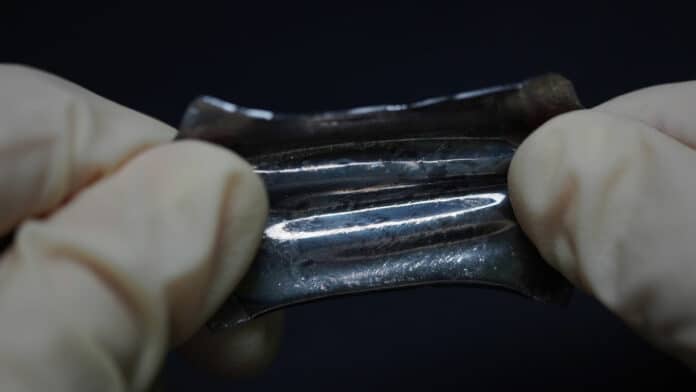Wearable devices have garnered increased attention over the past years for their potential as sensors that could monitor various biomarkers, a means of drug delivery, medical devices, and more. In order to be functional and practical, these devices require highly deformable batteries that are flexible and stretchable. Several studies have focused on the stable operation and life span of batteries. On the other hand, there has been less focus on how to protect batteries from moisture and gases.
Because wearable devices are exposed to the atmosphere, it is important to extend battery life while protecting the batteries from atmospheric moisture and gases.
Now, a team of researchers from Yokohama National University in Japan has developed a stretchable packaging film for these batteries with a high gas and moisture barrier functionality. This brings closer the possibility of wearable devices with highly deformable batteries as a common technology.
To create this stretchable packaging film with high gas barrier functionality, the researcher coated a thin layer of liquid metal onto a gold (Au)-deposited thermoplastic polyurethane film using the layer-by-layer method. The resulting film exhibits excellent oxygen gas impermeability under mechanical strain and extremely low moisture permeability. It shows high impermeability along with high mechanical robustness.
Using the proposed stretchable gas barrier film, researchers developed a highly deformable lithium-ion battery that offers reliable operation in the air. The highly deformable battery operation is analyzed by powering LEDs under mechanical deformations in ambient conditions.
“It is exciting that in addition to the development of a stretchable battery, which could be used in the next generation of smart devices, including future wearable devices, films with high gas and moisture barrier properties can be achieved by using a novel material called liquid metal,” said corresponding author Hiroki Ota of the Department of Mechanical Engineering at Yokohama National University.
The research holds the promise of being able to use batteries that have a high energy density, high working voltage, and long-term stability and are also highly deformable in wearable devices. Also, the proposed stretchable packaging film can potentially be used for the development of packaging films in advanced wearable electronic devices.
In the next step, researchers are planning to enhance the moisture protection ability of the film by modifying the materials. Another future direction is improving the stability of the performance of the batteries, even under deformation. Making the film cost-effective will also contribute to eventual scalability.
“Further cost reductions of the developed film will lead to the implementation of stretchable batteries,” Ota said. “In addition, the film could be useful as a barrier film for organic electronics and so on.”
Journal reference:
- Nyamjargal Ochirkhuyag, Yuuki Nishitai, Satoru Mizuguchi, Yuji Isano, Sijie Ni, Koki Murakami, Masaki Shimamura, Hiroki Iida, Kazuhide Ueno, and Hiroki Ota. Stretchable gas barrier films using liquid metal toward a highly deformable battery. ACS Applied Material and Interfaces, 2022; DOI: 10.1021/acsami.2c13023
